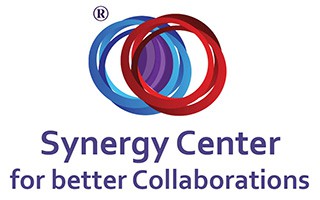Organizational synergy is an important concept that’s practicable for organizations facing mergers or acquisitions. The latter’s usually a difficult moment for organizations, because it compels organizations to adopt new cultures, learn cultures of other partnering entities, and possibly abandon their own culture (which in most cases is unlikely).
Resistance to change is well documented – organizational people aren’t always willing to give up their worldviews, paradigms or unique environment for the sake of cultural reforms. As a result, consequences of resistance to change have occurred – low employee morale, job dissatisfaction, employee turnover, inroads into organizational bottom line, energy wastage, etc.
Thus, mergers or acquisitions can be counterproductive if they don’t take into account the fact that people can’t abandon their inimitable symbols, routines, power structures, rituals, control systems, stories, etc. — things, which define their sense of identity and belonging — their worldview, environment and “ways of doing things” — who they’re.
The concept of organizational synergy, as defined by Dr. Rami Ben-Yshai in his book Organizational Synergy: A Practical Guide – Recalibrate Interactions to Achieve Peak Engagement, Productivity & Profit, seeks to fix these problems that have continued to bedevil organizations that are going under, being sold, merging with one another or being acquired by a more powerful organization. That’s the difficult reality of the 21st century organizational environment — highly competitive, predatory, violent and complex.
If your organization is currently in that predicament, read on to learn how to implement the concept of organizational synergy to avert problems that have been mentioned above.
Dimensions of Implementation
1 – Containment or Enabling
Ben-Yshai identifies three useful tools in this case:
- Embracing diversity
- Bending rules if necessary to accommodate openness, overriding ego or empathy
- Increasing the effectiveness of communication
The author gives an example where the containment dimension occurs in an organization. A case where an organization uses various techniques to foster synergy between board members. Some techniques include increasing the familiarization between board member’s personal and professional environment, engaging in leisure activities together, etc.
2 – Coercion or Enforcement Dimension
This is applicable in a situation in which there’s a merger or acquisition, and employees from different organizations — which have different cultures — can’t cooperate with each other, perhaps because they’re culturally incompatible – or fear the process of assimilation or acculturation.
This is usually a difficult moment, because employees may be reluctant to associate with people who’re culturally different from them, and who they perceive as a threat. In such scenarios, organizations force people – using beliefs, threat or intimidation – to cooperate on the basis that cooperation would result to better or more useful outcomes.
Of the two dimensions, the first induces synergy naturally while the second forcefully. However, the latter option assumes that employees would eventually get used to each other; hence, there would be no need to implement the dimension in the long-term.
Implementing the concept of synergy’s in keeping with running opposites at the same time without regard to their polarity. Same goes with instituting cultural reforms while preserving culture — these two don’t go together, yet they help organizations to maintain balance. Imagine you’re compelled to cooperate with your competitor, reason being that it’d result to the common good of the parties involved.
The two extremes on either end are competition and cooperation, yet the coexistence of the opposites can’t be ruled after mergers and acquisitions, and implementing the dimensions of synergy. In such a case, then it becomes necessary to refer the organization as ‘chaordic’.
Ben-Yshai’s ingenuity’s evident in how he’s able to apply esoteric techniques to cure ‘chemistry’ problems, which affect organizations that undergo mergers and acquisitions. In a sense, the author relies on a way to unify opposite forces at organization, as their coexistence’s okay.
Why?
Because synergy derives its strength from whole — not parts of the whole. Other than that, as the author would attest, synergy fosters shared strategic vision and wisdom toward a common goal among unlikely (uncooperative) parties. This is something that can be viewed as an ‘alliance of convenience’, and better still pretty much more than that. However, synergy can’t take place if there’s no diversity (cultural incompatibility or lack of chemistry) and improvement of quality of interactions between components (opposites) that have come together. And that’s it!




918 kiss Deposit
8 Feb 2019Magnificent beat ! I wish to apprentice whilst you amend your web site, how could i subscribe for a weblog web
site? The account aided me a acceptable deal.
youtube scr888
25 Feb 2019These are genuinely enormous ideas in concerning blogging.
You have touched some fastidious factors here.
Any way keep up wrinting. http://marriagecounselingalternative.com/__media__/js/netsoltrademark.php?d=www.insolvencyadvice.ie%2Fdiscussion%2F83416%2Fwhat-is-scr888